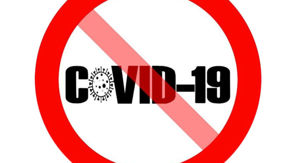After an unusually difficult week at work, I shared with a friend the impact on my team and me.
I was expecting compassion, or at least sympathy. My friend is warm and kind, and he knows the pressures of leading an organization. So I was surprised when he offered me neither. “You’ve been through so much worse,” he replied. “This will be easy for you.”
I asked what he meant, and he pointed to my life experience. He said if I could endure daily racism and bigotry, then dealing with the ups and downs of leadership should be a cinch in comparison.
This conversation didn’t sit well with me, and I’ve spent the past few weeks trying to figure out why. Here’s what I’ve come up with: While it’s true that people from marginalized communities endure unique hardships, and while the science demonstrates that minoritized individuals have deeper reservoirs of resilience, it’s also true that we have cultural biases towards resilience that have negative impacts on us and our organizations.
For instance, when leaders encourage resilience without being attentive to the unique hardships of marginalized groups, they might be creating conditions in which individuals don’t feel comfortable speaking up or taking action about what they’re enduring. This is compounded by the fact that, for many who come from the margins, it’s common to normalize unnecessary hardship.
A good leader will not assume that their marginalized employees have superhuman resilience simply because of their identities. Doing so can be another way of othering people and can result in a failure to provide needed support.
In the exchange with my friend, we never had the opportunity to dig into the challenges I was dealing with at work; my presumed resilience meant that I could overcome it through grit and perseverance alone.
Resilience has become so ubiquitous that I actually wouldn’t mind never hearing about it again. We have resilience workshops and workbooks; resilience shampoos and conditioners; chief resilience officers and corporate resilience awards. Some have even claimed that the term is so overused that it no longer carries discernible meaning. But when it comes to diversity, equity, and inclusion (DEI), it’s crucial that we understand these biases and how they might influence our decision-making— and in many cases, lead us to indecision and neglect.
Rather than throwing the baby out with the bath water (while remembering that babies are resilient, too) here are three steps leaders can take to adapt how we think about resilience to account for these biases and the resulting inequities.
1. Develop a clear understanding of what true resilience is and what it isn’t.
In the opening conversation with my friend, he equated the racism I experienced with the hardship I was facing at work. He also assumed that the challenges at work must have been comparatively minor to the challenges I overcame daily. In a way, he was correct. I did have experience in dealing with hardship and confidence that I would overcome this challenge.
But on the whole, he was wrong. He was assuming that the thick skin I developed from dealing with racism meant that I could tough this out, too. To me, the challenges of racism were more familiar because I’d navigated them my whole life. The work challenges were new. Moreover, I didn’t see them comparatively; they seemed to be of entirely different orders.
Perhaps most importantly, I could see something from my position that was hard for him to see. Because of his bias about racism and resilience, he shut down the conversation before it even started. He assumed he knew where I was coming from, and that misinformation guided his response. He dismissed these challenges when I mentioned them, which was hurtful and unhelpful — and it demonstrated a misunderstanding of what true resilience is.
Here’s what I said to him after reflecting on it: Resilience is not about gritting your teeth and suffering quietly, and it’s more than simply developing thick skin. Resilience is about our ability to find hope and agency amid difficulty.
One way to clarify your understanding of resilience is through the frame of surviving and thriving. Survival speaks to endurance. Can we withstand the hardship before us and live to tell the tale? In a corporate setting, the answer is most likely yes. Most of us face few physical threats at our places of work.
Thriving, though, is a different matter altogether. This isn’t about the ability to withstand the pain, but about altering the experience altogether. Thriving is about the quality of the workplace environment, the trust across team members, the support systems in place. In the context of our work, the animating force for resilience has to do with the quality of our experience – our thriving.
Through our work with corporate leaders, we have identified four tactics to cultivate and strengthen resilience:
- Reconnect with those around you, even when you just want to hibernate.
- Reframe your problems by focusing on the options in front of you.
- Rewire how you view yourself and your capabilities.
- Re-energize by doing what brings you energy, as opposed to resting by doing nothing.
2. Consider how shared challenges impact people differently.
The global shutdown that came with Covid-19 disproportionately affected women. U.S. Census Bureau data shows that when the global health crisis began, about 3.5 million mothers living with school-aged children left their jobs to care for their children.
As the pandemic raged on, many companies began to recognize the strain that it was putting on their employees. Companies offered new resources, including funds to support mental health counseling, remote workstations, and even exercise equipment. Their approach was well-intentioned: Let’s help everyone equally by putting aside a certain amount of money to support each employee. What this approach fails to recognize is that different people are affected differently by the phenomena of our world. So when few companies offered childcare support, only a few of the many capable mothers all across the country were able to return to work.
A disconnected leader might see that women aren’t returning to the workforce and shrug their shoulders. Many will assume it’s because the women didn’t have enough commitment to stay. A good leader would instead ask why, and then look for barriers that might be precluding people from thriving. We’ve seen many leaders spring to action as they’ve learned about these barriers. According to Care.com’s “The Future of Benefits” annual report, the number of employers offering childcare jumped from 36% of those surveyed in 2019 to 56% in 2022.
A good leader will be attentive to these various demands and dynamics at three different levels: personal, organizational, and systemic. A good leader will also ask what they expect from various groups while keeping in mind what is already on their plates. A good leader will not assume that people from marginalized background will have higher levels of resilience. Ensuring that they meet people where they are prevents them from dismissing their concerns, overlooking real problems when they come, and neglecting to take necessary and appropriate action.
3. Don’t use perceived, individual resilience to deflect real, systemic problems.
I had young kids when the pandemic began, and for a long time, it felt to me that they were vulnerable: We didn’t know a thing about the virus, and it would be two years until they could be vaccinated. We had no idea the social and emotional impact of not going to school. And anytime we would discuss it, someone would shrug their shoulders, and say “Well, kids are resilient.”
Sure, kids are resilient in a lot of ways, but this response felt dismissive, too. Some people had the privilege of leaving the conversation there, and some parents adopting this frame as a kind of defense mechanism. But for many parents, myself included, that answer just wasn’t good enough. We took every action we could do create the right conditions to help protect them.
I see a similar conversation playing out in corporate settings constantly. When bad things happen, whether layoffs or takeovers or discord among colleagues, I hear leaders shrugging their shoulders and saying, “They’ll be fine.” I’m sure things work themselves out in many cases, but I find myself wondering: “Wouldn’t you rather prepare what you can rather than simply cross your fingers and hope for the best?”
Too often, we use resilience as a mechanism to put the onus on the individual managing the problem rather than taking responsibility for the problem itself. At its worst, resilience is a corporate cop-out that enables us to deflect responsibility to the person dealing with the fallout. Worse still, when that person is unable to manage the pressure, we blame them and say they just weren’t resilient enough.
Sometimes, the problem is not of individual resilience but of flawed systems breaking down. Humans have the tendency to ascribe flaws to the people around us. A good leader knows not to assume that the problem is no just inside your people; the problem can be in your organization, too. I’ve worked with plenty of leaders who will point their colleagues and say, “Betty isn’t mentally strong enough,” or “Gautam can’t handle the pressure.” Few leaders have the insight and self-awareness to consider their role in setting their employees up for hardship.
The difficult truth here is that the two are not mutually exclusive. It can be both true that the person and the system are flawed; When resilience is required, it can illuminate the inner character of an individual just as much as it can reveal the inner character of our organizations and our leadership. Perhaps we can also take these opportunities — just as we ask our employees — to reflect on what we might reform and redress so that resilience is not required in the first place.
Ultimately, the takeaway is this: There are biases embedded in our thinking and behavior on resilience. Our best bet is to continue learning and growing, so that we set our organizations and the people we care about to not just survive, but to thrive.











